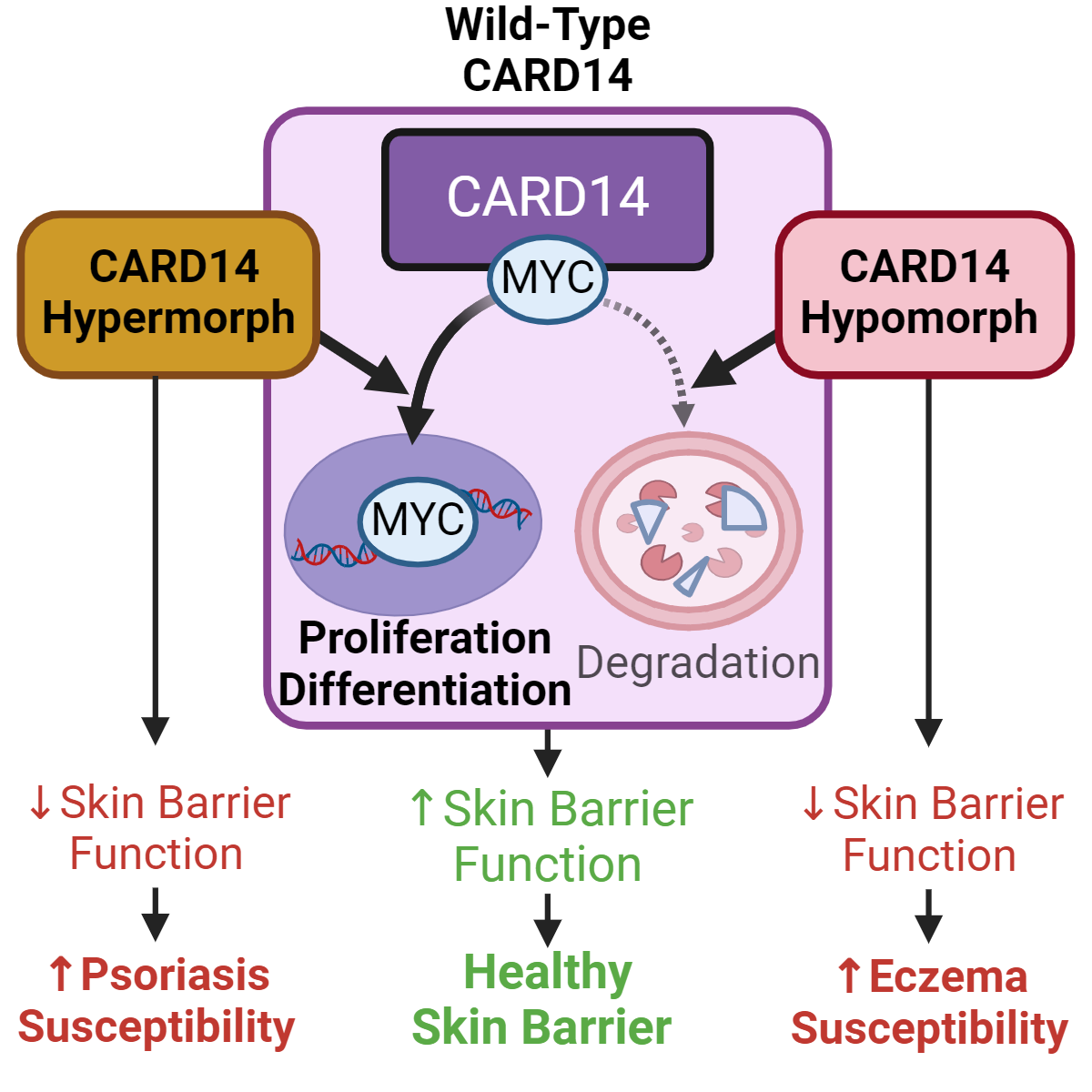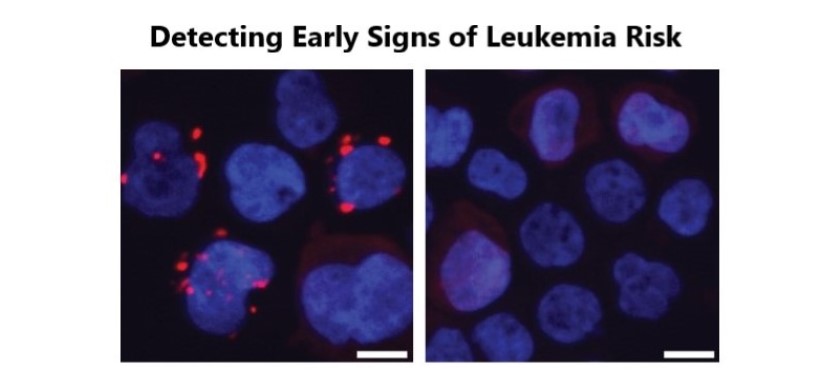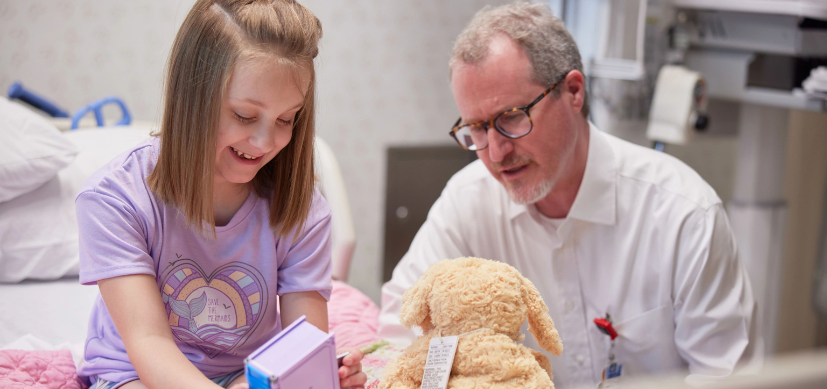Study Pierces a Mystery of Healthy Skin Barrier Formation
Research By: Stanley DeVore, PhD | Gurjit Khurana Hershey, MD, PhD
Post Date: August 7, 2024 | Publish Date: Aug. 6, 2024

Experts at Cincinnati Children’s have discovered a novel signaling pathway that opens new doors to treating atopic dermatitis and psoriasis, and may have impacts beyond skin disease
Our skin–the body’s largest organ–provides the first line of defense against infections and many other threats to our health. Decades of research has shown that a wide range of diseases can occur, or become worse, when the skin cannot form an effective barrier.
Now, experts in human genetics and asthma research at Cincinnati Children’s report discovering a novel molecular signaling pathway that plays a crucial role in maintaining our skin barrier. The far-reaching findings eventually may lead to new ways to prevent and treat inflammatory skin diseases such as atopic dermatitis (AD, or eczema) and psoriasis.
The study was published online Aug. 6, 2024, in Cell Reports. The team of 22 co-authors was led by first author Stanley DeVore, PhD, and corresponding author Gurjit Khurana Hershey, MD, PhD.
“Our research discovered a previously unknown cellular pathway involving the protein CARD14,” DeVore says. “When this protein works properly, it keeps our skin barrier healthy, but when CARD14 is not working properly, it promotes the development of skin disease.
“We found that CARD14 directly binds and regulates MYC, a protein involved in controlling cell growth that can contribute to cancer when it malfunctions. Our study shows that the proper interaction between these two proteins is important for a healthy skin barrier and protecting against eczema and psoriasis. Additionally, given the association of MYC with cancer, our findings also suggest that dysfunctional CARD14-MYC signaling may contribute to certain types of cancer throughout the body.”
Barrier protection that goes deeper than the skin
Previous research has focused on the CARD14-NFκB signaling pathway, which is thought to promote psoriatic diseases when elevated and to promote atopic dermatitis when reduced. Millions of people are affected by these and other inflammatory skin disorders.
“However, that model does not fully explain the variability in CARD14-driven diseases,” says Hershey, who directs the Division of Asthma Research at Cincinnati Children’s. “This new CARD14-MYC signaling pathway strengthens the link between CARD14 and skin barrier health. Its signals regulate the function of MYC in the most common type of skin cell.”
Study co-authors say that CARD14 regulates skin barrier function through two mechanisms: stimulating NFκB to establish an antimicrobial barrier and stimulating MYC to help build a physical barrier.
The study further explores how various mutations in CARD14 can promote different skin diseases, including AD and psoriasis. Importantly, the study reports that altered CARD14-MYC signaling could affect barrier function and allergic diseases in other tissues, contributing to asthma by affecting airway tissue linings or contributing to eosinophilic esophagitis by affecting the digestive tract. The novel pathway may also contribute to certain cancers that begin in epithelial tissues.
Next steps
DeVore says the hunt is on to identify small-molecule agents that can safely influence the CARD14-MYC pathway. In fact, aspects of the study have been included in a recent patent filing.
“Our ultimate goal is to develop novel therapeutics,” DeVore says. “We also are conducting studies aimed at identifying cancers that may be affected by CARD14-MYC signaling.”
In the meantime, co-authors plan to share their findings at the 2025 Joint Conference of the American Academy of Allergy, Asthma and Immunology (AAAAI) and the World Allergy Organization (WAO), to be held Feb. 28 to March 3 in San Diego.
About the study
Co-authors from Cincinnati Children’s include Matthew Schuetz, BS; Lauren Alvey, BS; Henry Lujan, PhD; David Ochayon, PhD; Lindsey Williams, BS; Wan-Chi (Daisy) Chang, MS; Alyssa Filuta, MS; Brandy Ruff, BS; Arjun Kothari, MEng; Eric Brandt, PhD; Latha Satish, PhD; Krishna Roskin, PhD; Andrew Herr, PhD; Jocelyn Biagini, PhD; and Lisa Martin, PhD.
Funding sources for this work include the National Institutes of Health (U19AI70235, T32GM063483, R01AI162964, and T32ES010957). The Cincinnati Children’s Research Flow Cytometry Facility, Bio-Imaging and Analysis Facility, Integrated Pathology Research Facility, and Genomics Sequencing Facility also contributed.
| Original title: | Regulation of MYC by CARD14 in human epithelium is a determinant of epidermal homeostasis and disease |
| Published in: | Cell Reports |
| Publish date: | Aug. 6, 2024 |
Research By


My lab combines epidemiologic, basic, translational and clinical research approaches to answer fundamental questions related to childhood asthma, atopic dermatitis, food allergy and allergic rhinitis.







